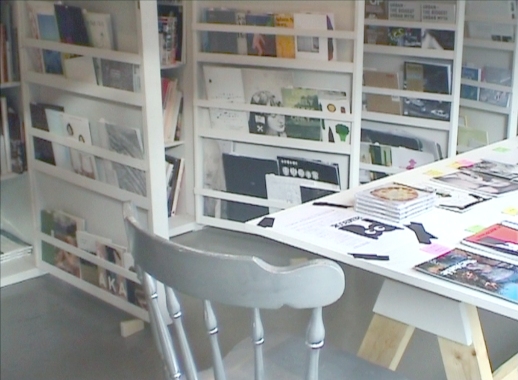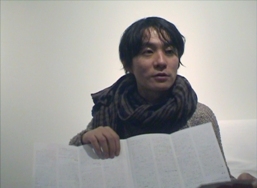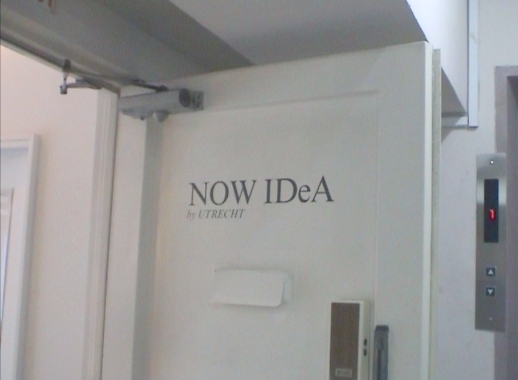Art in the Age of Reckless Bookmaking
Never before has the world been so populated by bookmakers. More new magazines and book titles were produced in 2008 than ever before in human history. And I was under the impression that print was dead, or at the very least dying a slow and painful death.
This paper growth has been brought on partly by a new ecology of small (even micro) publishers producing art-related books and magazines. Publishers such as Nieves in Zurich, Le Pres du Reel in Paris, TV Books in New York City, and The Spring Press in Sydney are just the tip of the iceberg. Some publishing companies are even run directly by the artists themselves, and publish only their own work, such as Bonehouse Books from the UK, run by Jon Chandler. These publishers are selling online, through art fairs and also more recently through a network of speciality bookshops. Hiroshi Eguchi’s publishing house UTRECHT in Naka-meguro, and his bookstore/gallery Now Idea in Aoyama, are leading lights among this new group of publishers and bookshops.
Hiroshi recently ran a booth at 101Tokyo Art Fair dedicated to this type of publication with Oliver Watson. Oliver is the editor and creative director of PAPERBACK, an independently produced art magazine distributed worldwide. Together they will also be directing an Art Book Fair in Tokyo later this year called ZINE’S MATE. Tokyo Art Beat recently talked with Hiroshi and Oliver in the Now Idea Gallery Space.

Hiroshi, tell us about the space we are in now.
Hiroshi: The space is called Now Idea, it includes a bookstore, gallery and terrace space. On the terrace are tables and chairs for people to relax, have coffee, and read through the books. Right now we have two artists from Buenos Aires, Mercedes Villalba and Julian Gatto, growing plants out there, part of an installation that will last two months. In the bookstore we stock lots of titles bought in because we like them, also some books that we have published.
You make your own books?
Hiroshi: Yes, we make small books, a kind of zine or artist book, which features one artist in one book with one concept, usually ten to thirty pages.

What is the gallery space meant for? What kind of artists is this space meant to support?
Hiroshi: I want this space to be used by the people who make and appreciate this kind of book. The artists participating are usually related to the books we are stocking, but I don’t necessarily think artists have to be connected to the books in our store. I don’t really want to run an art gallery, that’s not what this is. I want to see what comes out of using this space for expression.
So let’s talk a little about self-publishing. It seems as though the last five years have seen a massive increase in the number of titles produced despite claims that ‘print is dead’. Why is there such an increase in these kinds of self-published artists’ books? What is the appeal?
Hiroshi: I think we make them simply because it can be fun. Sorry it’s such a childish answer! We just enjoy the act of making. There are many factors which add up to make these kind of books and magazines fun or appealing. Firstly, they are handy; having a tangible, tactile object is nice to show people. It lets us engage with people in a stronger way than showing a website. It’s nicer to see something tangible.
I personally like the feeling of flipping pages, and seeing the specific procession of images. The layout is also important, thinking about the paper stock, how it feels, is it shiny, that kind of thing. There are so many elements to sympathize with in a book, it’s exciting to see how agreeable all these elements are together; does this image suit this paper? These are the reasons making books has become appealing, I think.
Oliver: I think what this really is, is a resurgence in popularity for making artist’s books. Publishers like Nieves have called them ‘zines’, so do we, but I think what they really are is a reincarnation of the artist’s book tradition which goes back to the Sixties. An artist’s book is simply an artist using the book format to express themselves, often in a cheap and mass produced fashion. This started out with people like Sol Lewitt and Ed Ruscha working in New York in the late Sixties and early Seventies at the same time that Printed Matter was founded.
Back then people were experimenting a lot with new media as they became accessible: publishing, film, video, computers. So why are we still using the format of the artist’s book today? What do you think about the function of these books and magazines now?
Oliver: Self publishing is a way for an amateur artist or an artist beginning their career to get their work into the public domain. Especially now that we have shops in major cities specializing in this kind of publication. Artists can get their work out as long as the bookshop is into what they are doing. This means that their work has been able to enter the public domain without the permission of a gallery or a real publisher. Which is very desirable for a lot of young artists today.
Hiroshi: I agree. In the past making a book was a big deal, you had to be someone with academic standing. If you published a book here in Japan people would call you ‘Sensei’ (Teacher). Things are so different today, it is so much easier to publish a book. Also, rather than just seeing something online, you can physically measure where your work has travelled with a book. I think that’s part of its function too. You can feel that the book is being distributed. In the past books were also so expensive, whereas now the monetary value is much flatter. I like the way things are now.
Ten years ago these present kinds of artist’s books, zines, and magazines did not really exist. Today there are small publishers all over the world and also small bookshops like Now Idea specializing in these kinds of publications: Ooga Booga in Los Angeles, Post Poetics in Seoul, Split Fountain in New Zealand. So what do you both think the situation will be like in another five years? What are both of your hopes for the future?
Oliver: I am a supporter of this new ‘art book’ culture, definitely.
Hiroshi: More people should learn to make these kinds of books. I hope many people can come to use this format for expressing themselves. I’m not worried about an over-saturated market.
Oliver: I think that the type of art we are talking about is a kind of return to expressionism. We have been through realism, minimalism, conceptualism, and I feel as though our generation has returned to something more expressive, by just drawing, making a collage making a painting.

When I think about this new “expressionism” and a desire for more publications I fear a kind of excess unmediated by much criticism. Should there be more consideration of people’s output?
Oliver: I don’t know how to judge that because, firstly, if you make a zine you need somewhere to sell it, so you either go online and sell it yourself, or to a bookshop and ask them to stock it. As you attempt to enter the public sphere with your zine you are in competition with all the other zines, so I suppose it should encourage artists to make something which stands out.
Hiroshi: I’m not worried about there ever being too many books. That is where the bookshops have a role, to curate, that’s our function. I’m optimistic about the future. The more books there are, the more choices I have about what titles to stock.
Oliver: Are you complaining there are too many art books?
I am just testing the boundaries of this kind of thinking. There has been a real exuberant period of people self-publishing and self-producing over the past few years. I wonder if now there should be a more critical response.
Oliver: But there is already editing; book shop owners, buyers and book fair organizers. Like Hiroshi said if you come down to Now Idea you will see his selection of what is out there. You are right that there is currently a real boom in independently published magazines, zines, and art books, despite the fact that many believe the publishing world is dying. But whose role is it to restrain? You can’t restrain people; people want to express themselves and they are going to do it. It’s just this generation creating its own solutions; we can’t necessarily get our art books published by a publishing giant like Phaidon, and so we create our own solutions, we publish our own books.
Thanks to Hiroshi Eguchi and Oliver Watson for their time, and to Chiharu Ozaki for translations.
You can visit the Zines Mate website at http://www.zinesmate.org/
Paperback Magazine – http://www.paperbackmagazine.com/
Now Idea – http://www.utrecht.jp/aoyama/exhibition.html/
Cameron McKean
Cameron McKean



